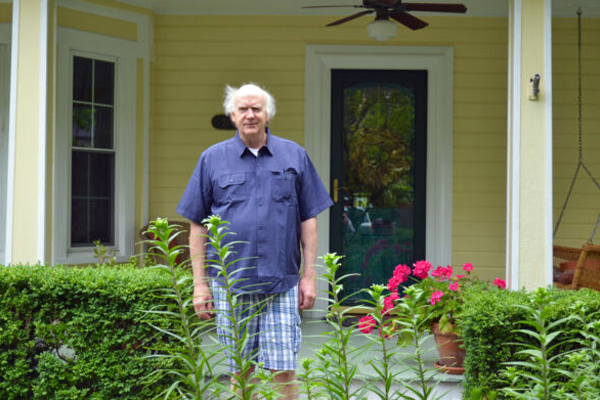
Excerpt from the Yellow Springs News
This week, the News published an article reviewing the last three months of the coronavirus pandemic, “A closer look at COVID’s first wave.” According to the latest statewide data, COVID-19 cases and deaths have peaked in Ohio are on a slow decline. In addition, Greene County seems to have fared relatively well so far, with a lower per capita case rate than the state average.
However, Ohio Governor Mike DeWine shared new information at his press briefing on Thursday, showing that the virus is spreading more quickly in the Dayton area, with a reproduction rate (R0) of 1.07, than anywhere else in the state.
The coronavirus is spreading more quickly in the Dayton area, the only place in the state where one sick person infects more than one other sick person, leading to an exponential rise in cases. (Ohio Department of Health)
Also at the briefing, DeWine said that there are no longer any restrictions on test availability in the state and that anyone who wants a test can now get a test, “even if you’re low risk and not showing symptoms.” (Find a test location here.) and Dr. Amy Acton resigned from her post as director of the Ohio Department of Health but will continue to advise DeWine on the coronavirus and other public health issues.
Earlier this week, I spoke with local physicist Dr. Allen Hunt, who has published research in the field of epidemiology, along with a wide variety of fields from climate to geophysics. A professor of earth and environmental sciences at Wright State University since 2007, Hunt was formerly a Fulbright Scholar and also worked at the National Science Foundation. He was among the earliest to sound the warning of the impending pandemic in a letter-to-the-editor to the News in January.
In our interview, Dr. Hunt addressed a newly released study showing that the shutdowns prevented 60 million coronavirus infections in the U.S. (in addition, if the U.S. shut down one week earlier, 36,000 lives could have been saved.) He talks about his projections for a second wave, a potential vaccine and the problem with waiting for “herd immunity.”
The interview was edited for length and clarity.
Yellow Springs News: So, you were talking about the coronavirus pandemic and its impending impact on the U.S. pretty much before anyone else. What were you seeing that so many people, even those in our own government, weren’t?
Dr. Hunt: It was because of preliminary data coming out of China by late January. The case fatality rate, or cfr, was 2% and the reproduction number [R0] was at least 2.5. R0 is a measure of how many others one person with the illness infects. When I compared the R0 value with the flu, a little above one in winter, and the case fatality rate with that of the flu, which is about 0.1%, I became alarmed. I’ve done scientific research in the field of epidemiology. In 2014, I started compiling data daily on the West African [ebola] epidemic. In that epidemic, the number was doubling every 21 days. In China, the number of people infected increased by a factor 10 every 8 days! The article I wrote was published in Complexity. I figured out the case fatality rate and the doubling time before the WHO and CDC. An article in Science recently referred to that article because I showed that not only can you get an exponential increase in the number of cases when you have no intervention, but also when the intervention ramps up proportionally to how many cases you have; if you can only trace and isolate half the individuals exposed by an ill person, it would bring R0 from 2.5 to 1.75, but any R0 greater than one is exponential.

